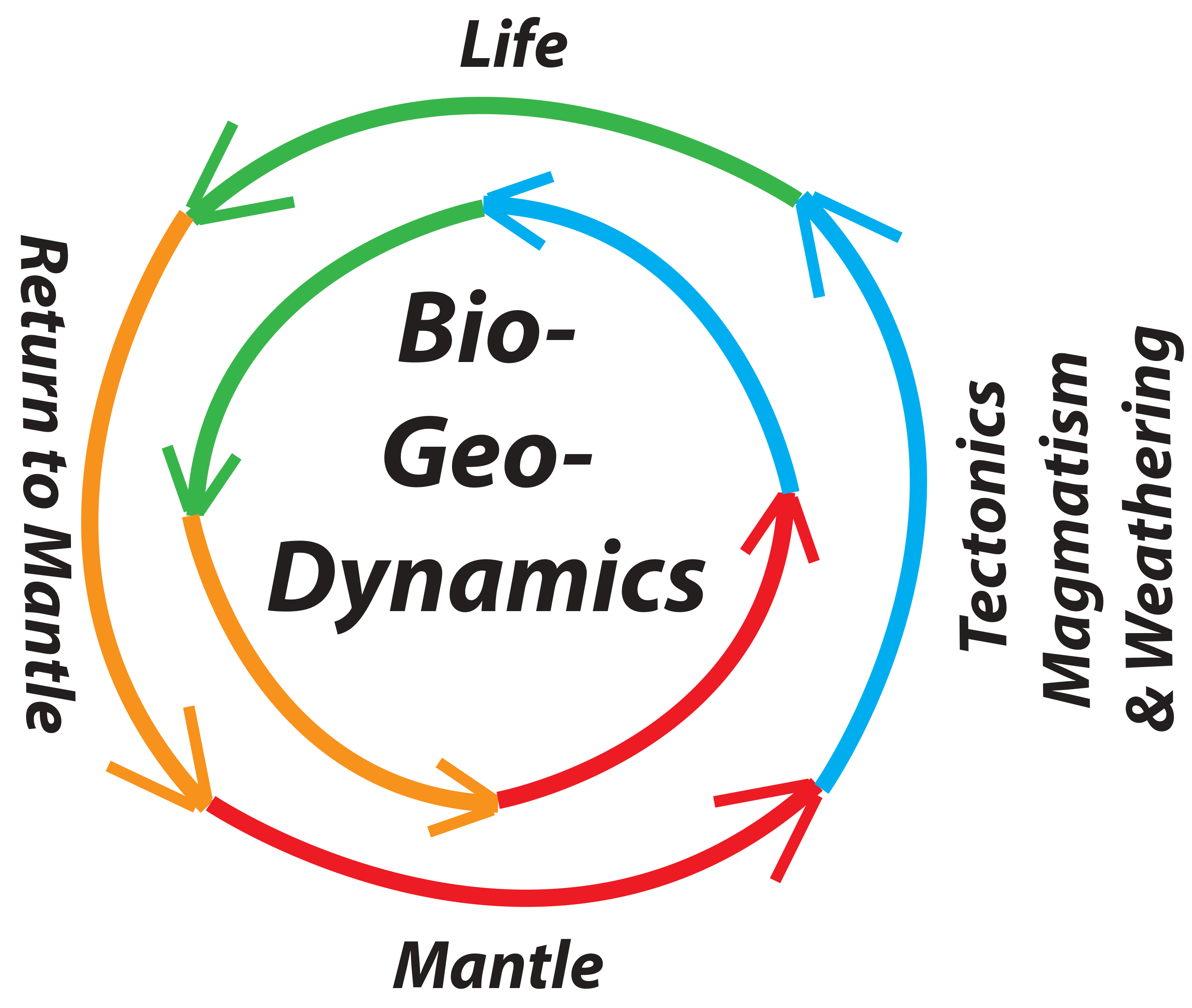Bio-Geodynamics

Geodynamic evolution of Earth’s mantle and lithosphere is tied to the evolution of its atmosphere, oceans, landscape and life and we would like to understand these interactions better through the emerging transdisciplinary field of biogeodynamics. The solid Earth is a high-energy, far-from equilibrium system, with 1000°s temperature differences between interior and exterior, and multiple tectono-magmatic styles likely happened through its geological history. The influences of any global tectono-magmatic style are at least twofold.
Firstly, life is sustained by a critical set of elements contained within rock, ocean and atmosphere reservoirs and cycled between Earth’s surface and interior via various tectonic, magmatic and surface processes.
Second, plate tectonic processes such as redistributing continents, growing mountain ranges, forming land bridges, and opening and closing of oceans provide environmental pressures that isolate and stimulate populations to adapt and evolve; recombinations of these features further stimulates evolution.
In the context of biogeodynamics, modern-style plate tectonics established sometime before the Cambrian explosion is often viewed as a strong promoter of biological evolution. Compared to single lid tectonic styles, plate tectonics better supplies nutrients and modulates climate, and exerts continuous moderate environmental pressures that drive evolution without being capable of extinguishing all life. Both nutrients and tectonics aspects thus suggest that a planet with oceans, continents, and modern-style plate tectonics maximizes opportunities for speciation and natural selection, whereas a similar planet without plate tectonics provides fewer such opportunities. Importantly, long timescales of biological evolution estimated from analysis of DNA changes and fossils are comparable to those of major geodynamic cycles such as the Wilson Cycle. This similarity creates a natural possibility for investigating coupling of lithospheric and mantle processes with life evolution by using novel hybrid bio-geodynamical numerical models.
The International Lithosphere Program has approved our proposal to establish a Task Force for 2021-2025 “Bio-geodynamics of the Lithosphere” to move this science forward.
Firstly, life is sustained by a critical set of elements contained within rock, ocean and atmosphere reservoirs and cycled between Earth’s surface and interior via various tectonic, magmatic and surface processes.
Second, plate tectonic processes such as redistributing continents, growing mountain ranges, forming land bridges, and opening and closing of oceans provide environmental pressures that isolate and stimulate populations to adapt and evolve; recombinations of these features further stimulates evolution.
In the context of biogeodynamics, modern-style plate tectonics established sometime before the Cambrian explosion is often viewed as a strong promoter of biological evolution. Compared to single lid tectonic styles, plate tectonics better supplies nutrients and modulates climate, and exerts continuous moderate environmental pressures that drive evolution without being capable of extinguishing all life. Both nutrients and tectonics aspects thus suggest that a planet with oceans, continents, and modern-style plate tectonics maximizes opportunities for speciation and natural selection, whereas a similar planet without plate tectonics provides fewer such opportunities. Importantly, long timescales of biological evolution estimated from analysis of DNA changes and fossils are comparable to those of major geodynamic cycles such as the Wilson Cycle. This similarity creates a natural possibility for investigating coupling of lithospheric and mantle processes with life evolution by using novel hybrid bio-geodynamical numerical models.
The International Lithosphere Program has approved our proposal to establish a Task Force for 2021-2025 “Bio-geodynamics of the Lithosphere” to move this science forward.